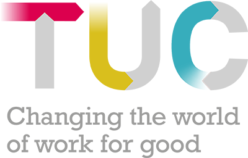At the TUC Digital Lab, we ran a survey amongst our affiliated unions, looking at their readiness for digital transformation. We found a mixed picture, with a number of technical and cultural areas where unions need to do more to meet the rising digital expectations of their membership and future members.
The report made some recommendations for union leaderships in evaluating their best next steps for their organisations. But it also suggested some areas where unions could benefit by working together on digital.
One big advantage the union movement has over a commercial sector is that we’re just that – A movement. We have links of solidarity and a recognition of shared common interest. We’re always going to have issues of competition (there are eight different TUC unions in education for example), but structurally we don’t have to compete in the way that say energy companies do, or even charities looking to make sure their donors’ cash goes to their own good causes.
That’s a source of power that we could leverage much more when it comes to adapting to digital change.
1. Developing a stronger member offer to young workers
All unions are currently struggling to engage and recruit young members. One factor making this important work more difficult is young workers’ higher level of expectations for a digital-first member experience.
For a generation that entered the labour market during the internet age, unions can’t just rely on the memory of the old ways held by older members. These days, the mainstream are online all day, mobile and immediate, and they are increasingly rejecting companies and organisations that don’t fit with the ways of working that come naturally to them.
Details will differ between unions and sectors but establishing and sharing information on young workers’ self-perceived needs from unions would benefit all unions undertaking change projects.
The TUC’s reaching young workers project has picked up many useful lessons in designing digital work-related services that appeal to young workers.
There is also scope for deepening research into how young members and prospective members would like more core aspects of union membership to develop.
2. Building a network of digital change champions
There is scope to form wider networks between unions to look at issues of digital change. Trying to support this has been the initial focus of our Digital Lab project (make sure to join our email list and come to events BTW!)
In making digital more mainstream in our unions, we’ll need to find ways for people to network outside of their regular channels, and to get a greater range of voices and experience into the debates.
Building wider communities of support and mentorship for those interested in digital from different roles across unions will allow good ideas and good practice to be shared more effectively.
This will be especially useful in unions that are not large enough to have sizeable digital teams of their own. But it’s also helpful for those unions large enough to have very specialist staff, if they’re able to hear how other unions’ specialists are doing too – it all helps keep their skills sharp.
3. Greater alignment in the tech that powers unions
When we asked unions how much they thought their current tech tools met their needs, it was clear there’s a lot of room for improvement in both the tools themselves and the ways we’re using them. Given the levels of dissatisfaction in unions with many of their current technologies, this could be a useful area for further development.
As an initial step, can we form working groups amongst unions using the same technologies, to help all unions take practical steps to get more out of their existing tech?
Given we’re all about people getting together to improve our bargaining power, working more closely to represent demands and concerns to suppliers could be a natural step for us.
It’s not solely about making sure bad suppliers aren’t taking us for a ride, by offering us things that are well past their sell-by date, or by charging multiple unions for the same custom development. Learning where some unions are actually getting better results out of the same tools might help us all become better clients as well.
After that, are there opportunities to share or sponsor the development of new niche functions or services that could beneficial a number of unions? An initial example of this is the TUC’s Megaphone campaign platform, but there will be many others, small or large.
Further in the future, could unions even develop elements of a shared core technology platform? This would be more ambitious but could work in the way that Government Digital Services’ platform has helped individual departments to develop new digital services without reinventing common elements such as identity checks, payment gateways or notification tools.
It sounds very ambitious from our current standpoint, but there’s a template in the US with the way unions came together to build the Action Network and Action Builder toolkits.
4. Reducing wasteful competition
Whilst the details of unions’ own situations are different, depending on industries and approaches, there are many common challenges we face.
The biggest of these are around reaching out to the majority of unorganised workers in the economy (more than 75%). Seen from a movement viewpoint, the competition that can occur between unions in tightly defined industries, is much less significant than the potential for overall growth.
We also know that digital change works best when it’s conducted in the open and able to share its learning.
What more can unions do to encourage a culture of openness and non-competitive mutual support, to help all unions realise the benefits of digital change more quickly and without duplicating effort and costs?
And practically, how does the union movement come together to communicate coherently with non-members in currently unorganised sectors? How can we help direct them towards unions in a way that makes sense to the workers and is sustainable for the unions? Digital will have a large part to play here.
This post was adapted from the Digital Lab report “Digital in UK unions: measuring our digital journey”, which you can download in full here.

